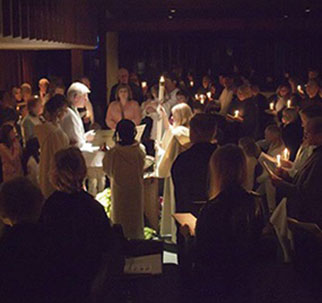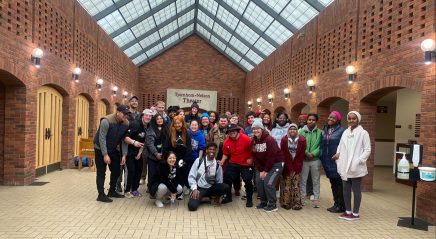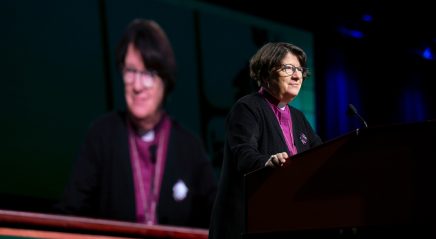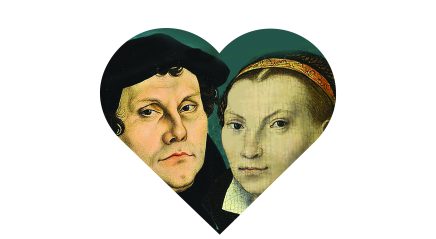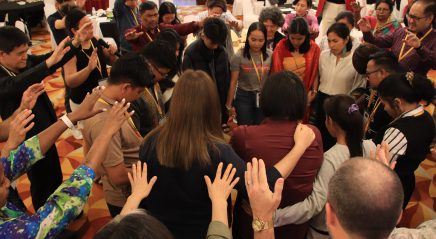Maundy Thursday
The liturgical color is either scarlet or white.
What does the name mean?
The term “Maundy” comes from the Latin “mandatum;” it is from a verb that means “to give” or “to order” — command. After Jesus and the disciples finished the Last Supper and walked toward Gethsemane, Jesus taught them a new commandment — “I give you a new commandment, that you love one another. Just as I have loved you, you also should love one another” (John 13:34).
The Last Supper
On the first Maundy Thursday, after they had eaten, Jesus gave the disciples his body and blood together with the bread and wine for the forgiveness of their sins. Called Holy Communion or the Eucharist, Lutherans believe this to be one of two sacraments — gifts from God. Most worship services focus on the meal and communion as a way to commemorate this day.
Foot washing
The story of the Last Supper in John’s Gospel records a remarkable event that is not mentioned in the other Gospels — to illustrate humility, Jesus performs the duty of a slave, washing the feet of his disciples and urging them to do the same for one another. Some Lutheran congregations incorporate this act of humility into their Maundy Thursday services.
Stripping of the altar
After the Eucharist is celebrated it is customary to “strip the altar,” which symbolizes the abandonment of Jesus by his disciples and the stripping of Jesus by the soldiers before his crucifixion. It represents the humiliation of Jesus and the consequences of sin as a preparation for the celebration of new life. In many congregations Psalm 22 is read or sung while the paraments are being removed.
Good Friday
No vestments or paraments are used on this day.
The stations of the cross
The stations of the cross is a devotional practice that consists of 14 stations, each one standing for an event that occurred in the passion of Jesus. Art, combined with literature, movement, prayer and reflection assist people as they work their way through this devotion.
The seven last words of Jesus
These are the phrases spoken by Christ during the time of his crucifixion. Recorded in the Gospels, they reveal the divinity of Jesus as well as his humanity.
‘Tre Ore’
Italian for “three hours,” “tre ore” refers to the time that Christ was on the cross — from 12:00 noon to 3:00 p.m. While no definite ritual is prescribed, this service centers on a series of homilies on the seven last words of Christ, along with appropriate hymns, periods for silent meditation, and the stations of the cross.
Tenebrae (Latin for “shadows” or “darkness”)
Tenebrae is usually held the evening of Good Friday and includes the gradual dimming of the lights and extinguishing of candles. The Christ candle is removed from the sanctuary and a concluding “Strepitus” or loud noise (slamming shut the Bible) symbolizes the earthquake and agony of creation at the death of Christ.
Vigil of Easter
White is the liturgical color used on this night.
The Easter Vigil is the pinnacle of the church year. Held between sunset on Holy Saturday and sunrise on Easter morning, it is the first celebration of Easter (traditionally holy days are considered to begin at sunset).
Service of Light
The Easter Vigil begins outside of the church building where a new paschal candle is blessed. Worshipers are reminded of the connection between the Passover of ancient Israel and the new Passover, which is Christ’s victory over sin and death.
Alleluia!
The alleluia is used for the first time since the beginning of Lent.
Baptism and affirmation of baptism
During a service of new beginnings, new brothers and sisters in Christ are baptized and new members are received through confirmation or the profession of faith.
Vigil readings
In “Evangelical Lutheran Worship” there are 12 Old Testament readings that are appointed for this service, which recount the acts of salvation throughout history. Some of the readings may be omitted leaving four that should not be excluded — the story of creation, the deliverance at the Red Sea, salvation freely offered from Isaiah and Daniel’s deliverance from the fiery furnace.


